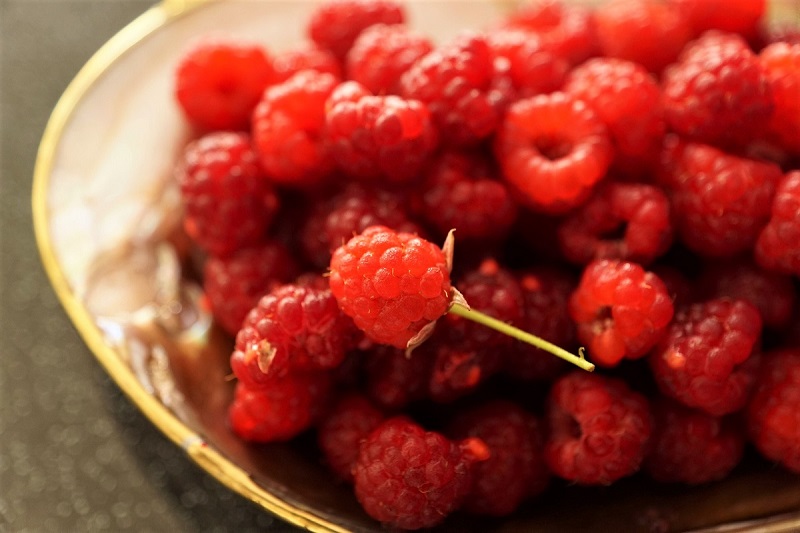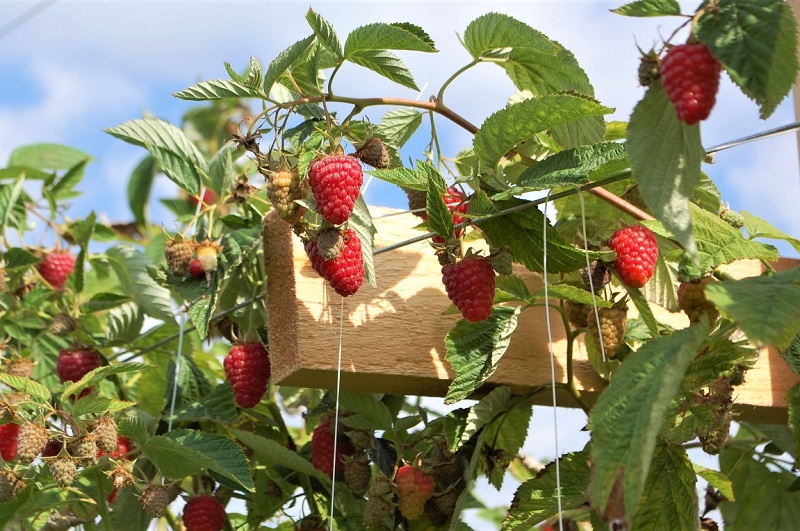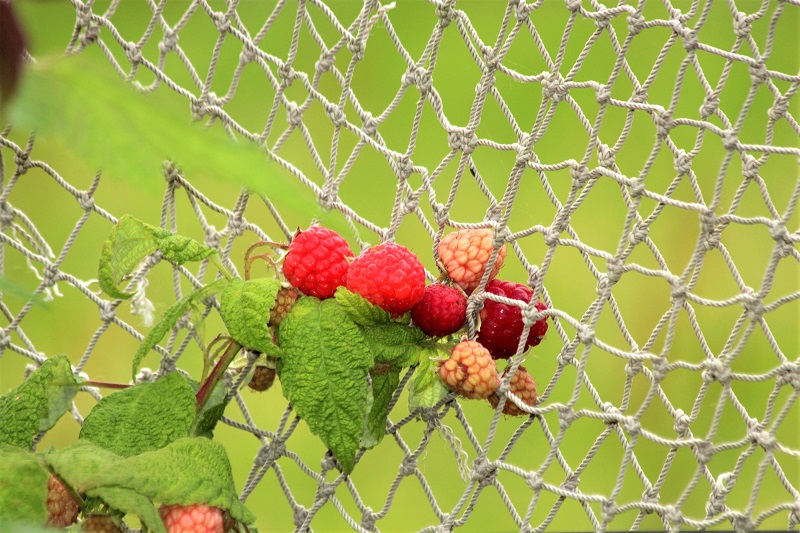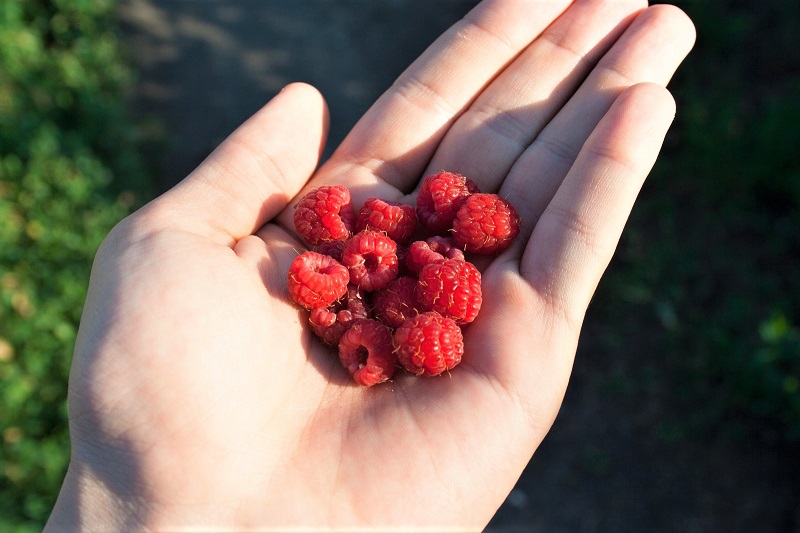There are two types of raspberries, both with their own particular requirements for growing. Summer-fruiting raspberries are more common, developing their fruit on last year’s growth. They bear one crop a year in the summertime.
Ever-bearing raspberries – also called fall-bearing or autumn-bearing – produce berries on new canes. They produce a fall crop and can also bear fruit the following summer.
If you want to grow raspberries in your garden, experts recommend a mix of both types to make the most of multiple harvest seasons.

How to Grow Raspberries
Contents
You can buy raspberries bare-root in the spring or as container-grown plants for spring, summer, or autumn planting. When planting, choose a location that ensures the plants will get at least six hours of direct sunlight a day.
Start with year-old raspberry canes from a trustworthy nursery. Plant the canes in early spring once the ground thaws. In regions that enjoy a milder climate, you can also plant in late autumn.
Raspberries require well-draining soil, free of perennial weeds. No large trees should shade the plants, or compete with the roots. Work some compost into the planting beds to give your crop a jump-start.
Below are a few more tips on growing raspberries in your backyard.
Planting Raspberries
Soak the roots in water for an hour or two before planting. Dig a hole big enough for the roots to spread. If you’re planting multiple bushes, dig a trench. Whether you’re planting bare-root or potted plants, keep the crown of the plant 1 or 2 inches above the ground.
Raspberries are vigorous growers and will produce runners that soon fill up a bed. Plant the canes 18 inches away from each other along rows that about four feet apart. Fill the soil back in, and tamp down with your foot. Once the canes are planted, cut them down to a height of 9 inches. This will encourage new growth.

Tending to Raspberry Plants
Depending on the variety you plant, you may need to fashion a trellis or some other type of support for the canes. You can establish a simple structure by driving two six-foot posts into the ground at either end of each row and stretching galvanized wire between them.
Summer-fruiting raspberries need three horizontal wires while fall-bearing varieties could do with two.
Maintain a thick layer of mulch around the plants at all times. Mulching is important throughout the season to preserve moisture and deter weeds. The plants will require an inch of water each week. Raspberries prefer regular watering over infrequent deep soaking.

Keep your raspberry bushes orderly by disposing of any “suckers” or canes that grow away from the rows. The wayward plants will compete with the bushes you have planted. If you wish, you can replant the suckers. Simply dig them up, set them in a separate area of prepared ground, and water them after planting.
Harvesting Raspberries
Your raspberry bushes will begin to produce fruit in their second season. Sometimes, ever-bearers will yield small berries in their first autumn. In early summer, the berries will ripen over the course of two weeks. You will need to pick berries every couple of days.
Try to harvest berries on sunny days, when the fruits are dry. Don’t tug too hard when picking the berries. A ripe raspberry will easily fall away from the vine.

Pruning After Harvest
Raspberries require pruning. Prune each summer-bearing plant back to the ground after you’ve harvested all its fruit. Be sure to leave the new canes that have yet to bear fruit. They will produce berries next year.
Because fall-bearing raspberries will give you a second crop the following summer, you can delay pruning them until the next autumn.








